Anker Innovations: Powering the World, One Smart Charge at a Time
Anker Summary
Explore how Anker Innovations evolved from a startup to a global tech leader. This deep dive reveals its rapid growth, cutting-edge charging tech, trusted sub-brands, award-winning customer service, ESG leadership, and its game-changing presence in Australia—now including a powerful UPS Equip partnership.
Listen to article discussion.
Introduction
These days, our gadgets are like extra limbs—we can’t live without them. So, we need power solutions that are smart, dependable, and can keep up with our non-stop lives. No matter where we are—home, office, or out and about—we rely on tech to stay in touch, get stuff done, and feel safe. And that means we need power that doesn’t quit. Founded in 2011, Anker Innovations has grown from a charger startup into a global leader with a mission to ‘enable everyone everywhere with energy independence, to power on a sustainable future together.
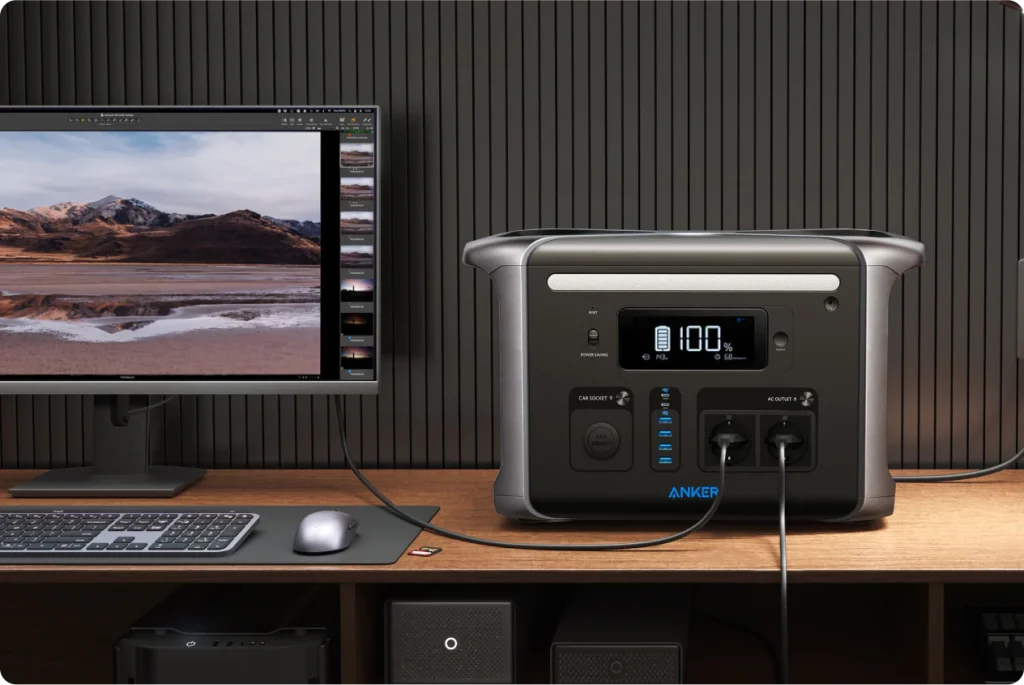
You Rely on Power. But Can You Rely on Your Power Source?
Yet, for many consumers, this dependency has created a cycle of frustration. Cables that fray within months, chargers that fail at the worst moment, and gadgets that offer impressive specs but collapse under real-world conditions. These shortcomings aren’t just inconveniences—they’re barriers to efficiency, trust, and sustainability.
“With over 200 million users and counting, Anker isn’t just scaling—it’s setting new global standards in reliability and innovation.”
How One Brand Quietly Took Over 200 million Devices
Among the flood of consumer tech companies, a distinct name has steadily risen by solving these exact frustrations: Anker Innovations. Established in 2011, Anker has evolved from selling replacement laptop batteries to redefining entire product categories. It hasn’t just competed—it has led. With a brand portfolio spanning smart home systems, audio, entertainment, energy storage, and workplace tech, Anker doesn’t merely keep up with the pace of innovation—it sets it.
What makes this growth particularly relevant to Australians is Anker’s increasingly visible presence across the country. From its local subsidiary in Canberra to its participation in All-Energy Australia 2023, Anker is aligning global innovation with local relevance. And now, with its newest partnership alongside UPS Equip, it is stepping into vital public health infrastructure—delivering uninterrupted power to vaccine fridges in remote and regional areas.
This article explores the multi-faceted rise of Anker Innovations. It examines the foundations of its business growth, the breakthroughs fuelling its product development, the depth of its customer care, its sustainability commitments, and how all of this culminates in real-world impact—especially across Australia.

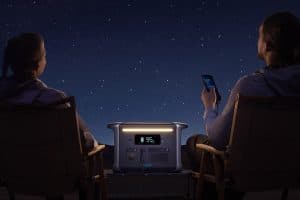
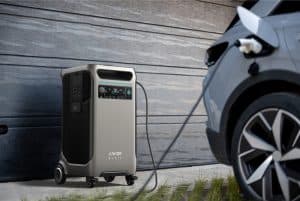
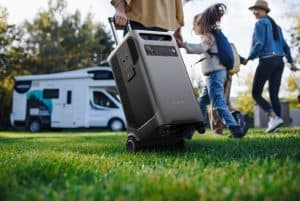
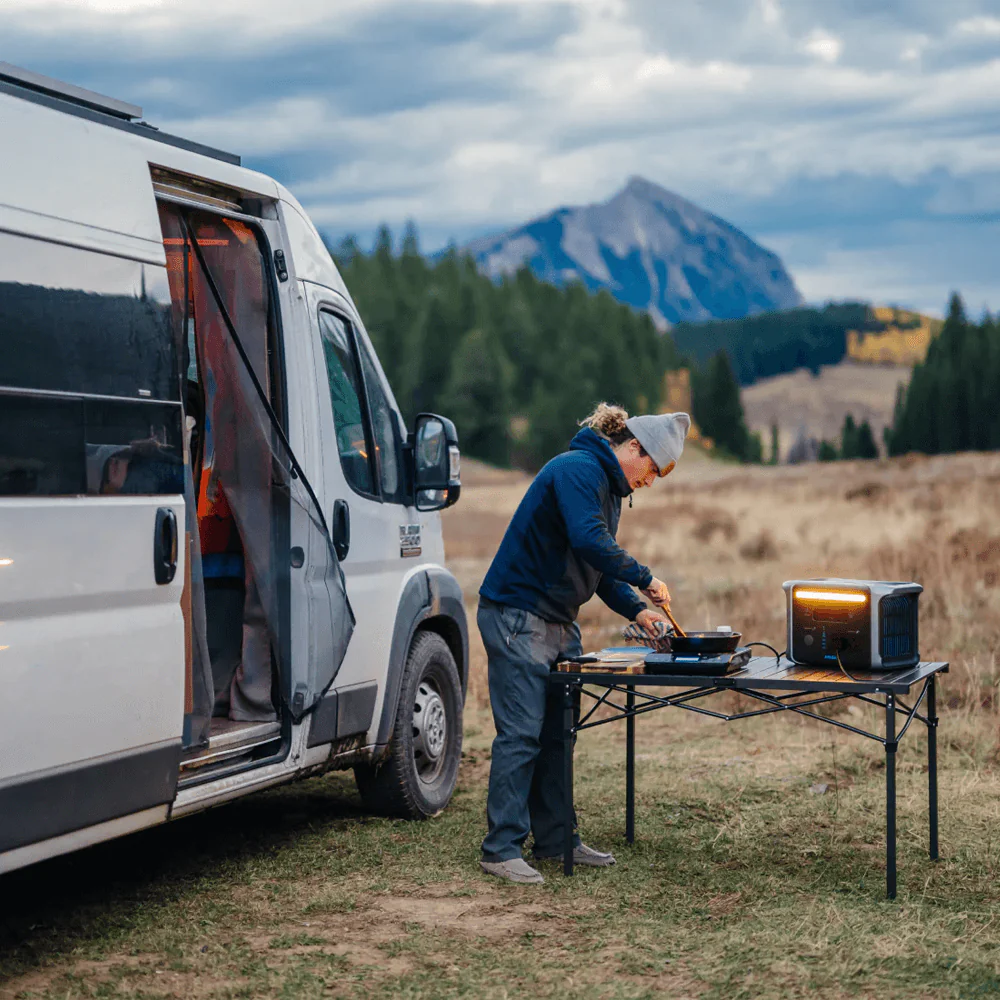
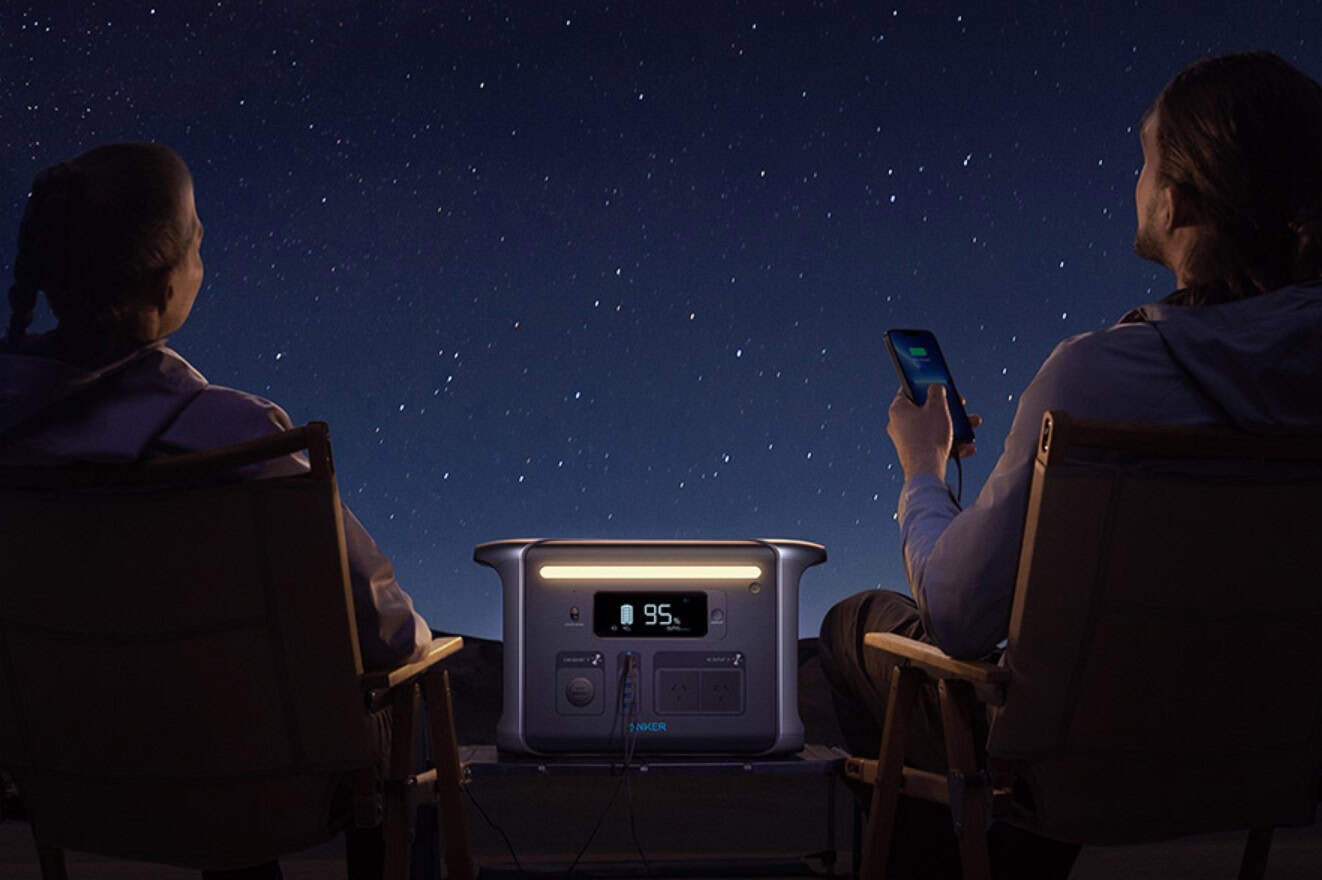
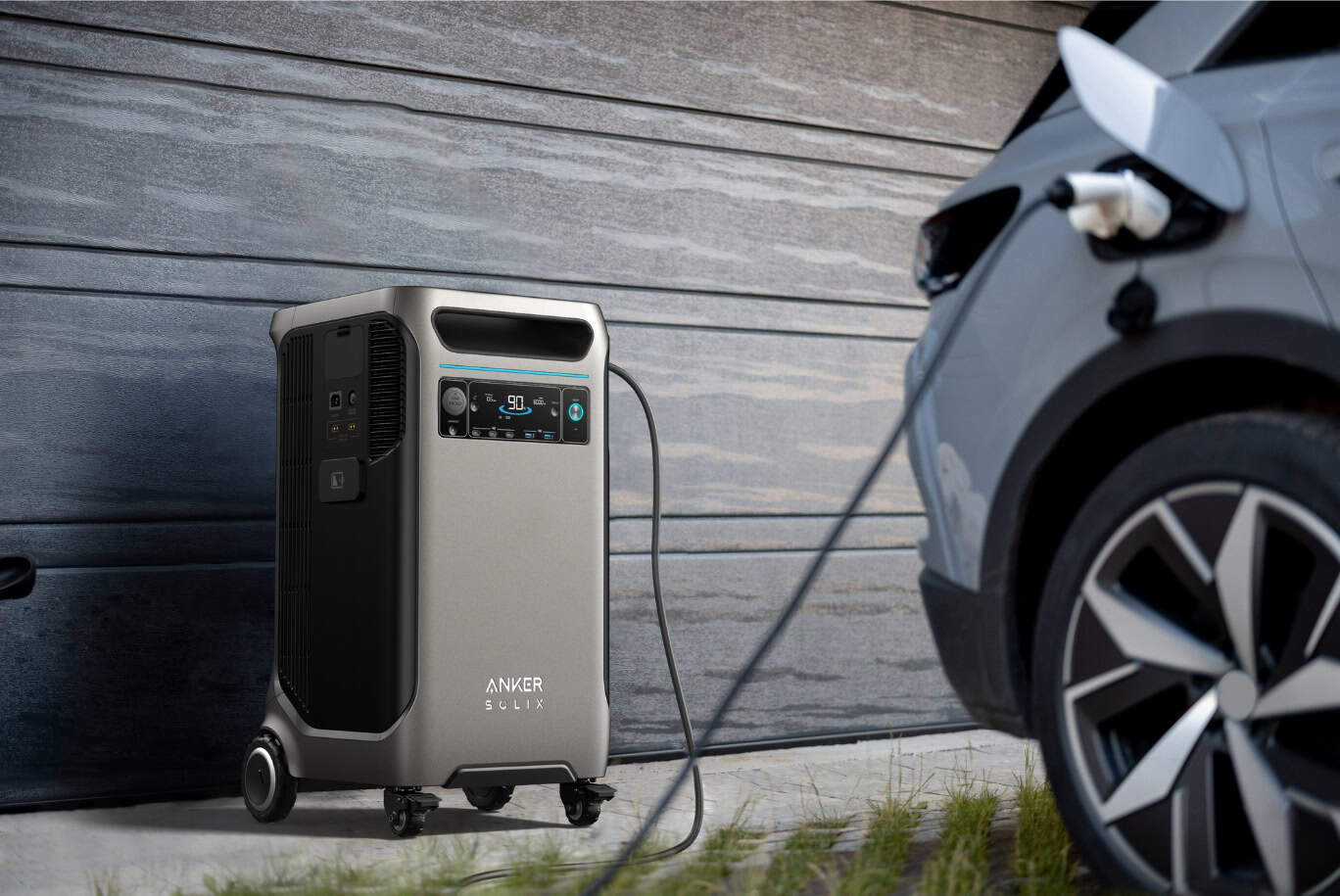
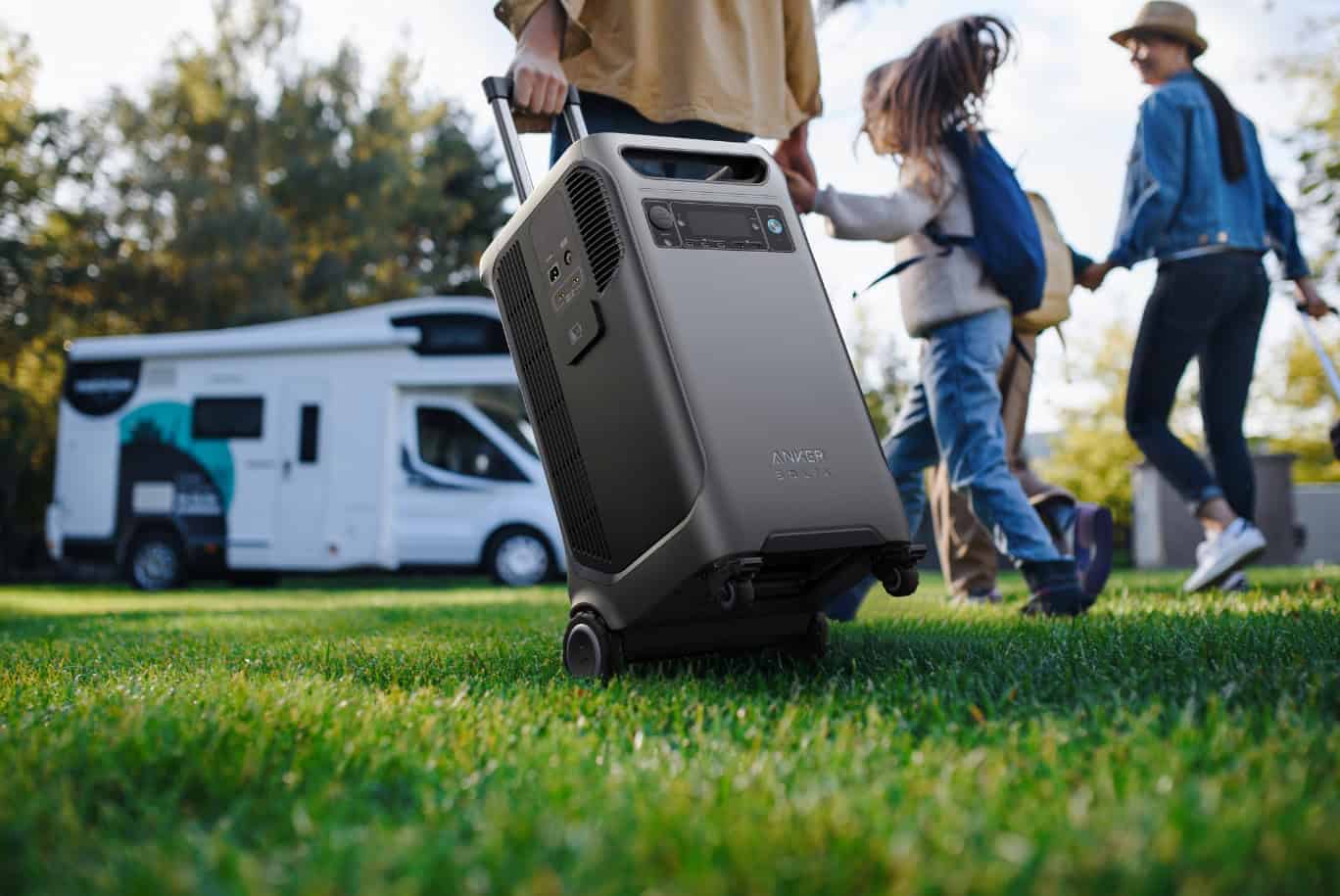
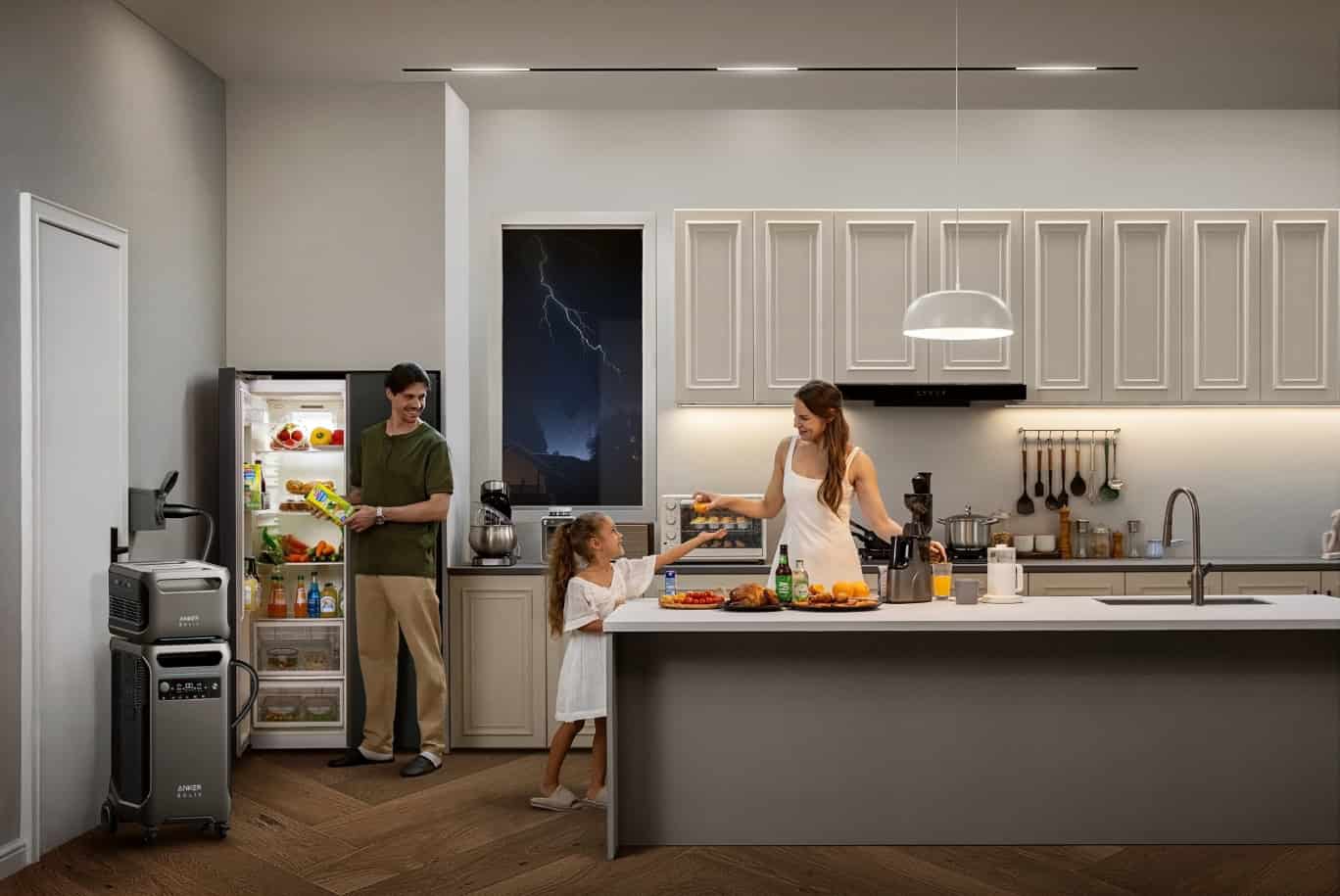
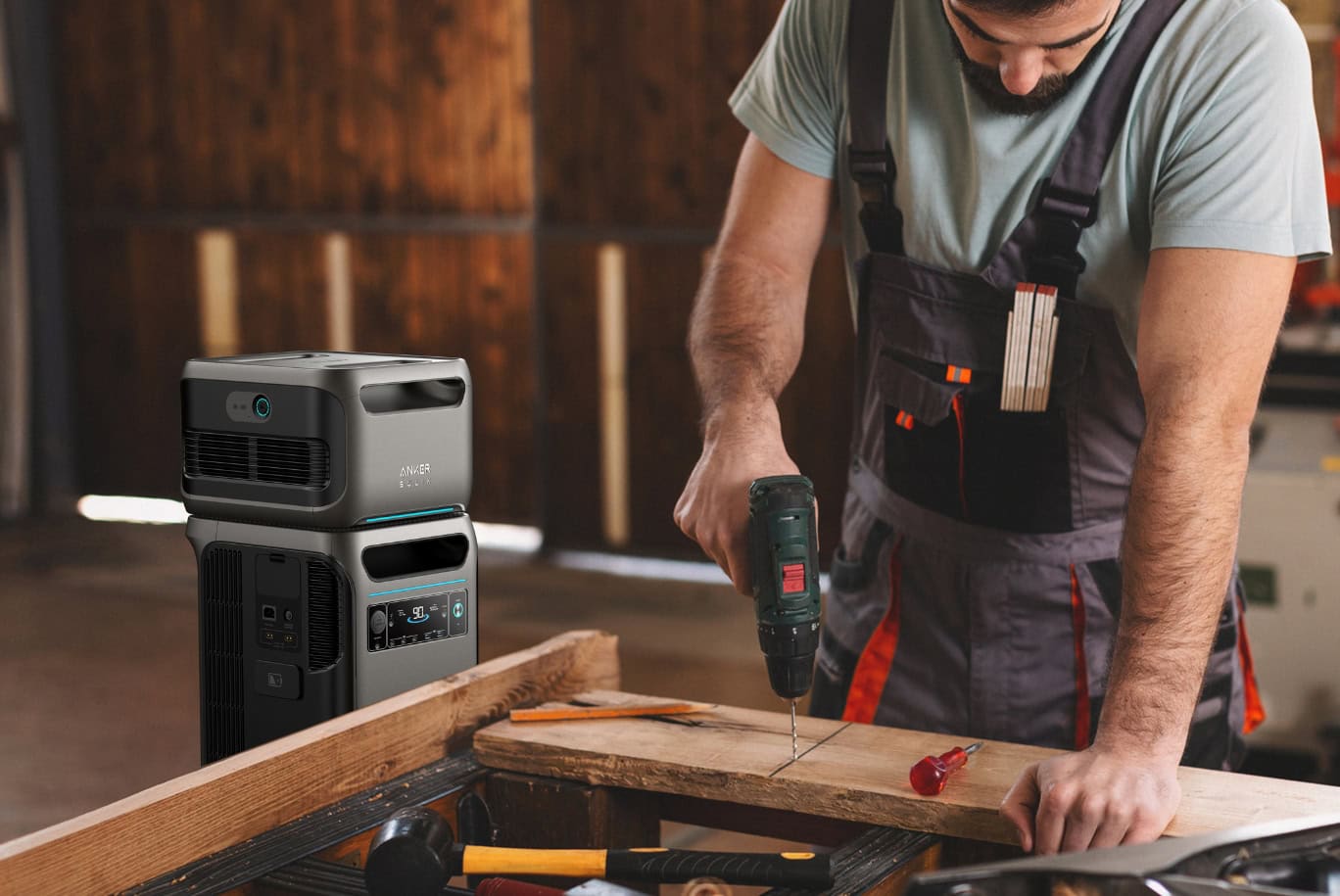
To understand how Anker came to power over 200 million users across 146 countries, and why its technology is now considered essential rather than optional, we begin at the core: the business engine driving its global expansion.
Key Takeaways
- Anker posted over $2.47 billion in revenue in 2023
- Operates in 146+ countries with 200M+ users
- Technological breakthroughs in GaNPrime & PowerIQ
- Brand portfolio includes Anker, eufy, soundcore, Nebula & more
- 98% customer satisfaction, with global service centres
- Offset 30,000 tons of CO₂ in 2023 through ESG initiatives
- New partnership with UPS Equip powers vaccine fridges across Australia
Technological Innovations
Anker’s tech journey began with PowerIQ in 2012, optimising device charging. By 2018, it pioneered GaN chargers, shrinking size without sacrificing power. The 2021 launch of GaNPrime marked a new pinnacle, redefining expectations in everyday tech with its focus on efficiency and multi-device charging.
GaN (Gallium Nitride) represents a significant leap forward in charging efficiency and size. Introduced by Anker ahead of many competitors, GaN allows chargers to be smaller, lighter, and faster while running cooler. The benefit to users is tangible—less heat, more power, and better portability. The innovation didn’t stop at the chip level. Anker combined this with intelligent design, resulting in some of the smallest and fastest chargers on the market, including the world’s first 20W mini charger for iPhones.
Smaller. Faster. Smarter. This Is the Charger Upgrade You Didn’t Know You Needed
But where GaN optimised the hardware, PowerIQ focused on the software side. Anker’s proprietary charging protocol allows each device to receive exactly the power it needs—nothing more, nothing less. It automatically detects the connected device and adjusts output accordingly. The result is not just safer charging, but faster and more efficient energy delivery. Users don’t need to second-guess whether they’ve chosen the right port or cable. PowerIQ handles the complexity invisibly.
Power That Thinks for You: Inside Anker’s Intelligent Charging Tech
The most recent leap, however, is GaNPrime—Anker’s most advanced multi-device charging system to date. This technology delivers an industry-leading 95% energy efficiency, reducing energy loss by up to 21% compared to standard models. For consumers, that translates to faster charging with less heat and reduced environmental impact. For Anker, it represents the culmination of over a decade of research and over 1,600 registered patents, including 175 invention patents, 848 utility model patents, and 594 design patents as of 2023. The Anker Prime line takes this further, integrating IoT systems and smart screens to offer users real-time control and insights into their charging ecosystem.
GaNPrime Isn’t Just Efficient. It’s 21% Smarter Than the Rest.
Driving all of this is a massive investment in Research & Development. In 2023 alone, Anker allocated $199.62 million to R&D, up from $122 million in 2021. Over 1,918 personnel, nearly half of Anker’s entire workforce, are dedicated to pushing the boundaries of what’s technically possible. This scale of technical investment isn’t common among consumer electronics brands—it signals intent, vision, and staying power.
These innovations aren’t abstract concepts—they are felt in every product Anker releases. From charging stations that power laptops and phones simultaneously, to home security devices with year-long battery life, the ripple effect of technological advancement is visible across all categories.
- First to launch GaN chargers in the market
- PowerIQ auto-detects device power needs
- GaNPrime offers up to 95% energy efficiency
- Invested $199.62M in R&D in 2023
- Holds 1,600+ global patents and trademarks
Innovation Is Only Real When It Improves Real Life
And yet, innovation alone doesn’t explain why users stay loyal to Anker products. The true test of any brand’s technology is how it integrates into real life—and that brings us to the broader product landscape that makes Anker more than just a charger company.
Business Growth & Global Market Expansion
When Anker Innovations launched in 2011, it entered a fiercely competitive landscape dominated by legacy tech brands and low-cost imitations. Its founder, Steven Yang, didn’t begin with mass-market dominance in mind. He started with a sharp focus—charging technology that simply worked better. What followed was an ascent few could have predicted.
Built for the Long Game, Not the Launch Hype
By 2014, just three years after its founding, Anker had claimed the #1 spot in the portable battery category on Amazon across North America, Europe, and Japan, while forging partnerships with retail giants like Best Buy and Walmart to bring its products offline. But the momentum didn’t stop there.
By 2023, the company reported a staggering USD $2.47 billion in revenue, with $228 million in net profit, growing year-on-year by over 41%—including surpassing $1 billion in annual sales for its core Anker brand and SOLIX energy solutions alone. In the first half of 2024 alone, revenue climbed another 36.55%, totalling RMB 9.648 billion.[RMB, is the currency system in China], proving that this was more than just a momentary peak—it was a sustained trajectory.
Global reach has played a central role in Anker’s growth strategy. With over 30 offices and operations in 146 countries, the company now serves more than 200 million users worldwide. This isn’t just presence; it’s scale with impact. Annual unit delivery has exceeded 60 million, powered by a supply network that includes major distribution centres in the USA, Germany, Japan, and China, as well as manufacturing hubs in China and Vietnam.
“Anker’s success isn’t driven by hype—it’s built on solving real-world frustrations with smart, sustainable technology.”
From Local Startup to Global Power Player
Recognition has followed closely behind performance. In global brand rankings, Anker is now 16th among Chinese brands in the BrandZ™ Top Global Brand Builders, and 66th among U.S. e-commerce brands by search volume. This brand visibility is no accident—it’s been earned through consistent product quality, high customer ratings, and meaningful media attention.
- Achieved $2.47 billion in revenue in 2023
- Revenue growth of 36.55% in H1 2024
- Operates in 146+ countries with 200M+ users
- Delivers 60+ million units annually
- Ranked 16th in BrandZ Global Brand Builders
Product Portfolio & Competitive Edge
For many consumers, Anker is first recognised for its chargers. But that’s just the entry point. What lies beneath is a diverse ecosystem of products spread across seven sub-brands, each tailored to a distinct aspect of daily life. This is where Anker’s technical breakthroughs transform into tangible value—where innovation meets usability.
Not Just a Brand—A Complete Ecosystem That Powers Everyday Life
At the centre is the Anker brand itself, which leads the global charging category. Here you’ll find Anker Nano, known for its compact speed; Anker Prime, the flagship range with IoT integration; and Anker SOLIX, offering portable power stations and home energy solutions. These aren’t just accessories—they’re infrastructure in miniature. Products like Anker PowerHouse have become essential for adventurers, emergency kits, and even off-grid homeowners. And in urban life, the seamless convenience of one charger powering a laptop, tablet, and phone at once is now expected, thanks to GaNPrime.
Then comes eufy, a sub-brand dedicated to the smart home. From robotic vacuums to video doorbells, eufy blends performance with privacy. Their security systems use HomeBase for fully local storage—meaning footage stays in your home, not in the cloud. Features like AI-powered detection, Forever Power solar charging, and MaxColor Vision cameras give users both peace of mind and impressive control. In Australia, eufy security cameras have already claimed the top market share for battery-powered models.
Each Brand Has a Job. Together, They Run Your Whole Life.
soundcore, the audio arm of Anker Innovations, focuses on delivering premium sound experiences without premium prices. Their Liberty 4 Pro earbuds rival major audio brands, offering spatial audio, AI vocal removal, and deep bass enhancement. Their Bluetooth speakers, open-ear wearables, and wireless headphones are consistently recognised for their build quality and sound clarity—often earning design awards and top-tier reviews.
For those working remotely or in hybrid offices, AnkerWork provides high-quality video conferencing and audio solutions. With VoiceRadar 3.0, AnkerWork products can isolate your voice even in noisy environments—a vital feature in today’s professional setups. This sub-brand bridges the gap between consumer tech and professional-grade hardware.
- Anker: Leading in charging and power solutions
- eufy: Smart home security with local storage & AI
- soundcore: High-quality audio with spatial sound & AI features
- Nebula: Portable projectors for flexible entertainment
- AnkerWork: Premium conferencing gear with VoiceRadar 3.0
- AnkerMake: Efficient 3D printing for creative professionals
Then there’s Nebula, a range of portable smart projectors designed for home and travel entertainment. Devices like the Capsule 3 Laser combine compact size with full HD performance and have become favourites for families and frequent travellers alike. Meanwhile, AnkerMake targets creators with intelligent 3D printers that streamline design and prototyping, empowering hobbyists and professionals alike to bring ideas to life with strong early adoption among design communities.
What Anker Doesn’t Charge You For Matters Just as Much
Each of these sub-brands is built around a clear identity and function. Nebula’s Capsule 3 Laser projector has earned Editors’ Choice for its top-tier 1080p image quality, while soundcore’s Liberty 4 Pro earbuds are lauded as ‘excellent’ by reviewers for their sound and noise-canceling prowess. Yet together, they form a cohesive portfolio—one that serves daily life from the socket to the screen, from the front door to the backyard. What makes this competitive edge even more durable is Anker’s decision to avoid ongoing subscription models. eufy’s products, for example, offer full functionality without monthly fees—a significant distinction in a market moving toward constant billing.
Still, products can only succeed if they’re backed by trust. That trust is built not just through performance but through service. The next section explores how Anker sustains its reputation long after the unboxing—through award-winning customer care.
Customer Satisfaction & Service Excellence
Innovation and product quality can attract customers, but it’s consistent service that earns their loyalty. Anker Innovations understands this deeply. In a market where many tech brands fade after the sale, Anker has invested heavily in customer care, building a support system that operates with the same precision and reliability as its hardware.
Every month, Anker manages over 478,000 customer interactions across six global service centres located in China, the United States, Germany, Japan, the United Arab Emirates, and Saudi Arabia. These centres are more than help desks—they are fast, localised, and highly trained response hubs. With over 400 team members, 80% of whom have more than three years of experience, the brand’s support infrastructure runs like a well-oiled machine.
That investment shows in the numbers. Customer satisfaction stands at 98%, while positive feedback on Amazon exceeds 99%. And in a category where support frustrations are common, Anker’s error escalation rate is below 0.2%. In practical terms, this means most issues are resolved quickly and professionally—often before they ever become complaints.
Not Just Customer Support—This Is Operational Excellence
Equally important is how this service supports Anker’s broader promise of reliability. For instance, buyers of eufy security systems or PowerHouse units are often making long-term investments. The assurance that support is available and effective becomes a critical part of the purchase decision, especially for Australians dealing with regional delivery times or limited access to in-store tech support. This is where Anker’s supply network and local presence become especially relevant.
Why Australian Customers Are Getting a Global Brand with Local Focus
- 478,000+ customer interactions handled monthly
- 98% satisfaction rate across global markets
- 99% positive reviews on Amazon
- <0.2% escalation rate for service issues
- 6 service centres across Asia, US, Europe, and Middle East
In Australia, Anker’s local service footprint, combined with its online customer support infrastructure, helps bridge the geographical gap that often limits satisfaction in global tech brands. Warranty claims, product setup, and general enquiries are managed efficiently, with clear escalation paths and low turnaround times.
Beyond metrics, there’s a deeper strategy at play. Anker isn’t just solving customer problems—it’s reinforcing brand equity. Every resolved case strengthens the trust that consumers place in the brand. This is especially important given the growing competition from no-name brands offering lower prices but failing on post-sale support.
And as Anker expands its presence in complex categories—such as smart home security and portable power stations—the need for dependable service becomes even more central. Consumers aren’t just buying a product; they’re entering a relationship with the brand.
Trust Is Earned After the Sale -And Anker Knows It
That relationship is increasingly shaped by another factor: values. In the next section, we’ll see how Anker’s commitment to sustainability and ethical practices further enhances its appeal—and why these efforts are not just a trend but a core part of its long-term strategy.
Sustainability & ESG Initiatives
Anker’s reputation has been built on smart technology and robust service—but its vision extends far beyond performance metrics. In a world facing escalating environmental challenges, the company has made measurable strides in embedding sustainability into its product development, packaging, and operations.
This isn’t a surface-level branding exercise. It’s a detailed, data-backed commitment that aligns with the company’s stated mission: to empower everyone with energy independence and build a sustainable future together.
In 2023 alone, Anker offset 30,000 tons of CO₂, a sharp rise from 5,000 tons the previous year. That’s the equivalent of planting more than 1.6 million trees. It also became a Carbon Trust Certified Partner, placing it among a select group of consumer tech brands taking verified action to reduce their carbon footprint. These milestones are impressive on their own, but more so when placed within the larger framework of Anker’s product design philosophy.
Sustainability Backed by Data—Not Just Declarations
One of the most visible changes lies in its approach to materials. Over 40% of the plastic used in Anker’s charging cables is now sourced from renewable materials like corn and sugarcane, creating a new class of bio-based cables. At the same time, 75% of product casings in certain charging lines are made from post-consumer recycled plastics, which helped reduce plastic use by 30.9 grams per unit in its Nano Charger series.
Anker has also taken a bold step in reducing unnecessary packaging. Many of its latest product lines now come in zero-plastic packaging, made from recyclable cardboard with soy-based ink. The focus is not just on recyclability but also on reducing volume—smaller, lighter packaging leads to more efficient shipping and less carbon emitted per unit sold.
From Corn to Cardboard—The New Building Blocks of Tech
- Offset 30,000 tons of CO₂ in 2023
- Uses bio-based plastics from corn and sugarcane
- 75% of product casings now use recycled plastic
- Introduced zero-plastic packaging across multiple lines
- LiFePO₄ batteries last 6x longer than standard lithium-ion
The durability of Anker’s products also plays an underappreciated role in its sustainability credentials. A longer-lasting device doesn’t need to be replaced as frequently, resulting in less electronic waste. For example, its PowerHouse battery stations use LiFePO4 battery cells, which offer up to 3,000 charge cycles and a lifespan more than six times that of traditional lithium-ion options. That level of longevity directly supports environmental goals by reducing the frequency of replacement.
Longer Life = Less Waste. Here’s How Anker Built It In.
These initiatives also tie back to customer satisfaction. Environmentally conscious consumers are looking for brands that reflect their values, and Anker’s action-oriented approach—rather than vague promises—has strengthened its appeal, especially in progressive markets like Australia.
But there’s another reason these initiatives matter. They aren’t just good for the planet; they’re good for business. ESG metrics are now widely used by investors, procurement departments, and even regulatory agencies to assess brand credibility. For a company with global ambitions and expanding enterprise solutions, these credentials support both growth and resilience.
And while many of these actions are global in scope, they’re being applied locally too. Anker’s growing Australian footprint now includes not only greener products but partnerships that support sustainability in healthcare. This leads us to one of the most practical, life-impacting examples of its strategy in motion—its partnership with UPS Equip.
Anker in Australia
For many global tech companies, Australia is an afterthought—a far-flung market that receives delayed launches and limited support. Anker has taken a very different approach. Instead of treating Australia as peripheral, it has identified it as a strategic opportunity—one where local presence and energy-focused innovation can meet rising demand in both residential and commercial sectors.
This focus is most evident through the establishment of ANKER INNOVATIONS PTY LTD, headquartered in Scoresby, VIC. Unlike typical overseas operations run remotely, this subsidiary supports on-the-ground activities, including sales, logistics, and partner engagement. With a team in place and an Australian website catering directly to local consumers, Anker has tailored its offering to match regional needs and expectations.
But presence alone isn’t enough. What has captured real attention is Anker’s active participation in Australia’s clean energy sector. At All-Energy Australia 2023, held in Scoresby, Anker showcased its SOLIX X1 series—a line of smart energy storage systems designed to serve homes, businesses, and off-grid use cases. This launch positioned Anker alongside solar and battery specialists, a bold move that signalled its intention to be more than just a consumer electronics brand.
Anker Didn’t Just Enter Australia—It Plugged into Its Future
SOLIX answers several pressing challenges in the Australian energy landscape. With energy prices fluctuating and power outages increasingly affecting rural communities, the need for portable, reliable, and efficient battery solutions has never been higher. Products like the Anker SOLIX F2000 and F2600 are built to fill this gap, offering features like solar panel integration, quiet operation, and robust AC output. These aren’t gadgets—they’re backup systems that can power essentials during blackouts or support remote work off the grid.
- Australian HQ: Scoresby, VIC
- Attended All-Energy Australia 2023
- Launched Anker SOLIX X1 series for smart energy
- Local focus on portable power + solar integration
- Solutions cater to off-grid and rural communities
Smart Storage for a Country That Runs on Sun
What makes this even more relevant is the growing demand for energy independence in rural and regional Australia. Solar installations are already common, but storage has lagged due to cost, complexity, or simply lack of awareness. Anker’s entrance into this space—paired with its retail accessibility and global scale—could shift that balance.
The company’s Australian momentum also benefits from its broader ecosystem of products. Security solutions from eufy, audio gear from soundcore, and flexible work tech from AnkerWork all speak directly to Australian lifestyles—whether it’s protecting a coastal property, setting up a remote workspace, or powering devices during travel.
When Global Innovation Meets Regional Partnerships, Everyone Wins
And this multi-category relevance is exactly what positions Anker for further expansion. Not just through products, but partnerships. Which brings us to a standout collaboration that’s helping deliver critical energy support across the country—Anker’s partnership with UPS Equip.
Partnership with UPS Equip
In remote regions and medical facilities across Australia, keeping vaccines at the correct temperature isn’t just a matter of efficiency—it’s a matter of life and public health. Cold chain reliability is essential, particularly in areas prone to power outages or limited infrastructure. This is where Anker’s technology, in partnership with UPS Equip, is stepping into an entirely new level of relevance.
“In Australia, Anker is bridging the gap between innovation and infrastructure, one vaccine fridge and solar-powered home at a time.”
The collaboration between Anker Innovations and UPS Equip focuses on delivering portable uninterruptible power supply (UPS) solutions specifically designed for vaccine refrigeration. These aren’t theoretical deployments. They are active, working systems designed to support medical fridges where power stability can mean the difference between preserved or wasted vaccines.
The Power Behind Every Safe Vaccine in the Fridge
At the core of the solution are Anker’s portable battery systems, notably from the SOLIX line, which offer clean, quiet, and easily deployable backup power. These units deliver high-capacity energy output, are solar-compatible, and come with multiple AC and DC ports for versatility. Combined with UPS Equip’s specialised hardware and local expertise, they provide medical centres, mobile clinics, and rural health hubs with reliable backup power—no diesel generators, no noise, no delays.
- Powers vaccine fridges in remote regions
- Combines Anker’s SOLIX batteries + UPS Equip’s hardware
- Quiet, portable, solar-compatible UPS systems
- Enables cold chain reliability in healthcare
- Serving rural clinics and mobile medical units across Australia
What makes this initiative especially impactful is its nationwide reach. UPS Equip has been a trusted supplier for healthcare and emergency response sectors, and its infrastructure is now amplified by Anker’s scalable and efficient energy systems. For communities in Western Australia, Northern Queensland, or the outback where grid reliability is uncertain, these solutions offer critical support during emergencies and everyday operation alike.
From the Outback to the ICU: Power That Reaches Where Others Don’t
This partnership also reflects Anker’s broader strategy—moving from consumer convenience to essential infrastructure. It demonstrates how a technology brand can serve frontline industries without compromising on portability, simplicity, or sustainability. For Australia, it’s a powerful sign of what’s possible when local challenges are met with global solutions tailored to fit.
Moreover, it’s a continuation of the themes explored throughout this article. We’ve seen how Anker’s growth, innovation, and sustainability strategies have played out across its product lines. This partnership is where they converge: high-performance energy storage, real-world reliability, and a commitment to social good.
It also sets the stage for understanding the broader implications of Anker’s market position—what it gets right, where challenges remain, and how consumers can make the most of what the brand has to offer.
The Trade-Offs: What You Gain—and What to Watch
| Pros | Cons |
| Proven innovation in charging and energy tech (GaN, PowerIQ, GaNPrime) | Higher price points than some budget alternatives |
| Wide product range covering home, work, audio, energy, and security | Retail availability in regional Australia may be limited |
| Exceptional customer service (98% satisfaction, global service centres) | Some niche products have been phased out or are region-specific |
| Strong sustainability actions (CO₂ offsets, recycled materials, bio-cables) | Limited brand awareness in Australia compared to mainstream tech |
| Localised presence with practical partnerships like UPS Equip | Product updates can vary across sub-brands and global markets |
This table doesn’t just weigh features—it highlights where Anker’s value proposition aligns with long-term reliability and where consumers might need to navigate trade-offs. For buyers seeking a deeper understanding, it serves as a guidepost, especially when comparing Anker with either mainstream electronics giants or lower-cost tech offerings.
But clarity only goes so far. What really drives action is having a checklist—a set of immediate next steps for evaluating or adopting Anker’s technology based on what matters most to your lifestyle or business.
Action Checklist
Quick Wins: What to Do If You’re Ready to Make a Move
Compare charging technology
If you’re still using older charging blocks or generic brands, explore how GaN and GaNPrime deliver faster, cooler, and more efficient charging. Look for PowerIQ compatibility to ensure optimal performance across your devices.
Explore the Anker SOLIX range
For households, campers, or off-grid living, portable energy stations like the SOLIX F2000 or F2600 offer dependable power. Solar integration and UPS compatibility make them especially valuable in rural or unpredictable energy environments.
Review eufy’s local security options
Whether you’re in a metro suburb or a remote property, eufy’s local storage, AI detection, and subscription-free features offer a smart home solution that puts privacy and control in your hands.
Check service availability
Use Anker’s Australian website to confirm local support, warranty details, and delivery timeframes. The company’s Scoresby-based operations and online infrastructure ensure faster service for local customers.
Recommend Anker + UPS Equip for vaccine storage
If you work in healthcare, public infrastructure, or logistics, explore the portable UPS + battery solutions designed for medical fridges. It’s a real-world application where performance and reliability matter every hour of the day.
Frequently Asked Questions
Still Thinking It Through? Here Are Your Answers.
What makes Anker’s GaNPrime technology special?
GaNPrime is Anker’s most advanced charging platform. It combines high efficiency with compact design, achieving up to 95% energy efficiency and reducing heat generation. It intelligently distributes power across multiple devices, ensuring safe and fast charging without sacrificing portability. This makes it ideal for users with a mix of laptops, phones, and tablets who need consistent, travel-ready power.
How does Anker support Australian customers?
Anker operates a local subsidiary in Scoresby, VIC, and offers dedicated Australian website support, warranty management, and logistics. Customers benefit from faster shipping, access to region-specific product launches, and responsive customer service backed by global infrastructure.
Are Anker’s products environmentally friendly?
Yes. Anker integrates recycled plastics, bio-based materials, and zero-plastic packaging in many of its product lines. The company offset 30,000 tonnes of CO₂ in 2023 and uses LiFePO4 batteries in power stations for longer lifespans. These sustainability efforts align with global environmental standards and improve product durability.
Which Anker brand is best for home security?
eufy is Anker’s sub-brand for smart home products. It offers security cameras, doorbells, and monitoring systems with features like local storage, AI detection, 4K resolution, and solar charging. Its ecosystem is designed to operate without monthly fees, making it a strong alternative to traditional subscription-based systems.
How does the UPS Equip partnership impact Australia?
Anker’s partnership with UPS Equip brings portable UPS + battery solutions to healthcare providers, especially in rural or remote regions. These units protect vaccine fridges from power outages and support cold chain reliability across the country, helping improve access to essential healthcare services.
Isn’t Anker more expensive than other brands?
Yes, some Anker products are priced above entry-level options—but they’re built for long-term value. With better components, longer warranties, and outstanding customer service, you’re investing in reliability, not just a gadget.
What if I’m not tech-savvy—are the products easy to use?
Absolutely. Anker’s gear is designed with simplicity in mind. Most products are plug-and-play, and apps like eufy Security are clean, intuitive, and built for everyday users. No manuals required.
There are so many Anker products. Where do I even start?
Start with your use case, not the product. Need home security? Go with eufy. Want reliable backup power? Look at Anker SOLIX. Charging on the go? Try Anker Nano or Prime. The article’s checklist section is a great guide.
What if something goes wrong—how’s their warranty?
Anker backs most products with 18 to 24-month warranties, plus local support in Australia via their Scoresby HQ and online support centre. Most issues are resolved quickly through a responsive and professional team.
Wrapping Up
Anker Innovations isn’t just a brand—it’s a blueprint for what modern technology companies can achieve when engineering, service, and responsibility are given equal weight. From its humble beginnings in 2011 to a multi-billion-dollar enterprise serving over 200 million users worldwide, Anker has proven that consumer electronics can be both powerful and purposeful.
Its success is not simply the result of clever products. It stems from a deep understanding of consumer needs, particularly the frustrations people face with unreliable, throwaway tech. In contrast, Anker’s products are built to last, designed to integrate, and supported by service teams that stand behind every unit shipped.
This commitment carries through every aspect of its operations—whether it’s pioneering GaNPrime charging, launching a network of smart sub-brands, investing in bio-based materials, or powering essential services in regional Australia through partnerships like the one with UPS Equip.
For Australians, Anker’s growing local presence offers something rare: global innovation paired with local reliability. Whether you’re an urban professional looking for compact power solutions, a regional homeowner needing security that works off-grid, or a healthcare provider safeguarding life-saving vaccines, Anker delivers more than products—it delivers trust.
From Charging Devices to Empowering Lives
And that’s the real story here. Anker isn’t chasing trends—it’s building a future where energy, security, and sound are dependable, accessible, and thoughtfully delivered. From remote properties to regional health services, its products are doing more than keeping devices alive—they’re supporting resilient lifestyles and critical care.
Could Anker’s energy solutions be the blueprint for Australia’s decentralised power future?
And with portable battery systems now supporting vaccine fridges and remote health setups, is this also the beginning of a new frontier for energy-reliable home medical care?
👉 Ready to explore Anker for your home, workplace, or organisation?
Visit Anker Australia’s website or learn more about its partnership with UPS Equip to see how this technology could fit into your life.
